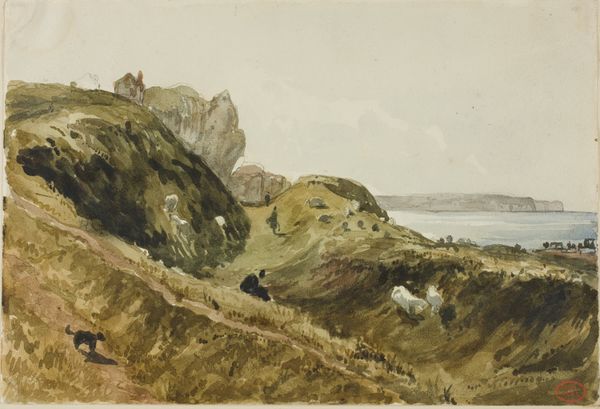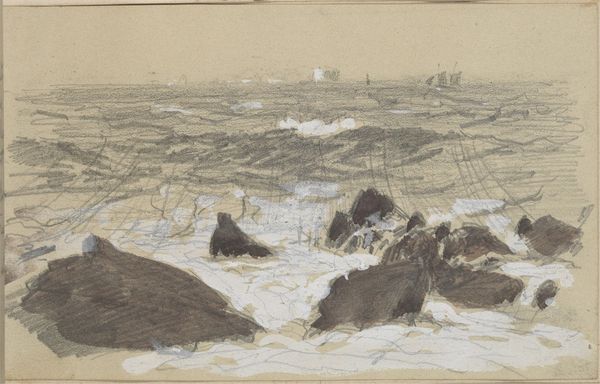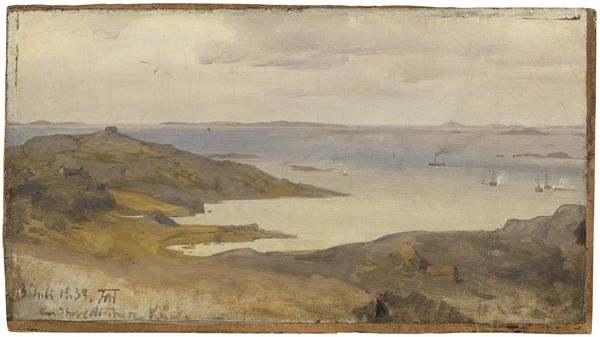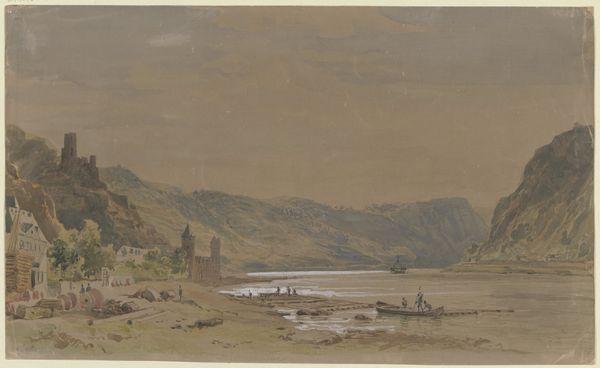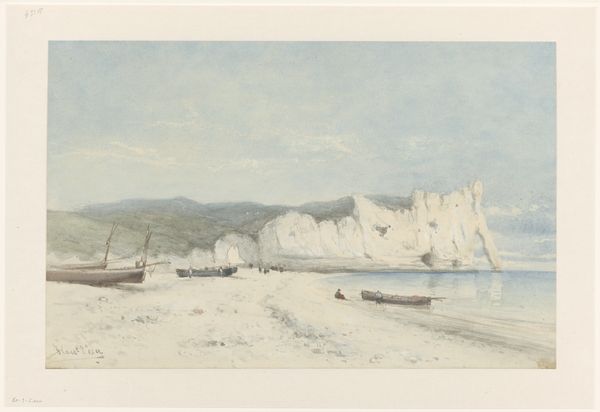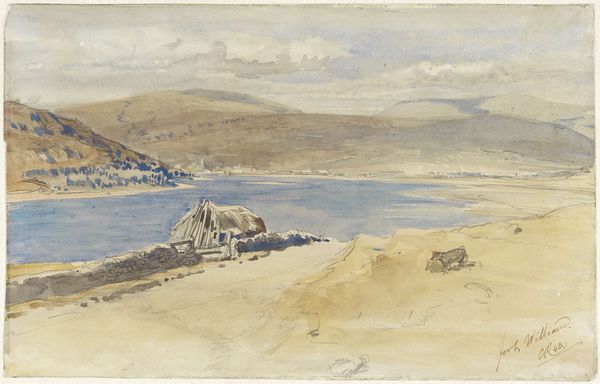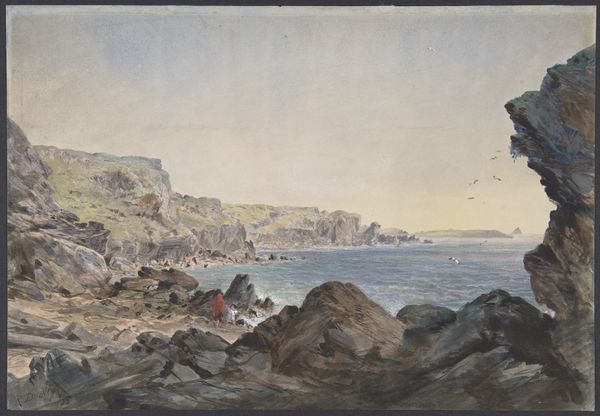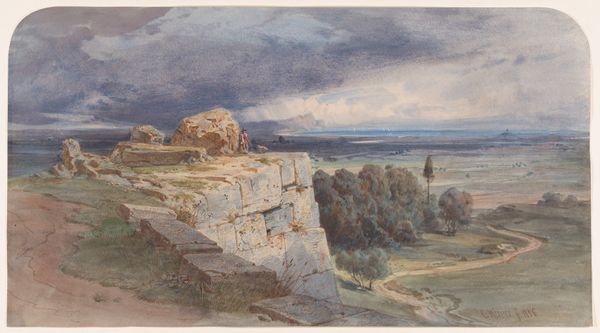
drawing, print, plein-air, watercolor
#
drawing
# print
#
plein-air
#
landscape
#
oil painting
#
watercolor
#
romanticism
#
watercolour illustration
#
watercolor
Dimensions: sheet: 6 11/16 x 10 5/16 in. (17 x 26.2 cm) mount: 6 15/16 x 10 1/2 in. (17.7 x 26.7 cm)
Copyright: Public Domain
William Dyce captured this watercolor view of Culver Cliff on the Isle of Wight sometime during his lifetime. The painting presents a seemingly tranquil coastal scene, but it subtly engages with the social realities of its time. Note the figures in the painting: one crouches over a driftwood log and the other wades out into the water. Dyce's choice to include working-class individuals suggests an interest in the lives of those often marginalized in artistic representations. The figures are stooped, backs turned, anonymous. Their connection to the sea and land speaks to labor and the natural world. Dyce’s artistic output was deeply entwined with his spiritual convictions. He believed art could serve a moral and didactic function. How does the work invite the viewer to reflect on the relationship between humanity and nature, labor and leisure, individual and society?
Comments
No comments
Be the first to comment and join the conversation on the ultimate creative platform.
